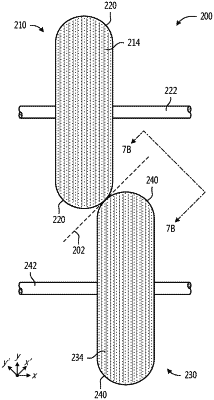| CPC B31D 5/0052 (2013.01) [B31D 2205/0023 (2013.01); B31D 2205/0082 (2013.01)] | 20 Claims |

|
1. A dunnage conversion machine, comprising:
a source of sheet material, wherein the sheet material is in a substantially flat configuration in the source of the sheet material; and
a conversion system configured to convert the sheet material from the substantially flat configuration into a non-flat configuration, wherein:
the conversion system includes a drive system configured to draw the sheet material from the source and through the conversion system,
the drive system comprises a first roller and a second roller,
a circumference of the first roller has a first curved profile,
a circumference of the second roller has a second curved profile,
the first and second rollers are arranged such that, when the sheet material is not located between the first and second rollers, the first curved profile of the first roller contacts the second curved profile of the second roller,
when the sheet material is located between the first and second rollers, the drive system is configured to feed the sheet material through the drive system by rotating at least one of the first and second rollers,
the first and second curved profiles of the first and second rollers are convex, and
the first and second rollers are offset such that, when the sheet material is not located between the first and second rollers, a point on first roller that is in contact with the second curved profile of the second roller is not on the maximum circumference of the first roller and a point on the second roller that is in contact with the first curved profile of the first roller is not on the maximum circumference of the second roller.
|